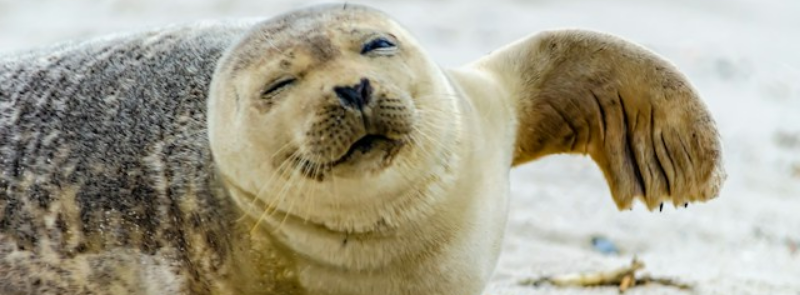
When It Occurs
Every March 22nd
Timeline
Days Passed (381)
# Hashtags
#InternationalSealDay #MarineEcosystem
Prepare to celebrate these charming creatures on International Seal Day, observed on March 22! This day is dedicated to increasing awareness about the significance of safeguarding seals and their habitats globally. Surprisingly, there are over 30 different species of seals worldwide. These playful and intelligent animals inhabit oceans across the globe, playing a vital role in maintaining marine ecosystems.
Purpose
International Seal Day raises awareness about the conservation of seal species, the threats they face, and the efforts needed to protect their populations and habitats. The day highlights the importance of seals in marine ecosystems and promotes actions to ensure their survival.
Significance of Seals
-
Ecological Role:
- Seals are important predators in marine ecosystems, helping to maintain the balance of species populations.
- They are indicators of ocean health, as their well-being reflects the state of their environment.
-
Biodiversity:
- Seals contribute to the biodiversity of marine life and support the health of their ecosystems.
-
Cultural Importance:
- Many cultures around the world have historical and cultural connections to seals, often featuring them in folklore, art, and as symbols of the natural world.
Threats to Seals
-
Habitat Destruction:
- Coastal development, pollution, and climate change impact the habitats where seals live, breed, and feed.
-
Climate Change:
- Melting ice due to global warming affects seal species that rely on ice-covered regions for breeding and hunting.
-
Hunting and Bycatch:
- Seals are hunted for their fur, meat, and oil in some regions. They also often become accidental victims of fishing nets and gear.
-
Pollution:
- Marine pollution, including plastic waste and chemical contaminants, poses significant risks to seal health and survival.
-
Disease:
- Pollution and climate change can increase the prevalence of diseases that affect seal populations.
Conservation Efforts
-
Protected Areas:
- Establishing marine protected areas (MPAs) helps safeguard critical habitats for seals.
-
Legislation:
- Implementing and enforcing laws that protect seals from hunting, bycatch, and habitat destruction.
-
Research and Monitoring:
- Conducting scientific research to monitor seal populations, health, and the effects of environmental changes.
-
Public Awareness:
- Educating the public about the importance of seal conservation and encouraging responsible behavior to protect marine environments.
-
Rescue and Rehabilitation:
- Organizations and wildlife rescue centers work to rehabilitate injured and orphaned seals and release them back into the wild.
Activities and Celebrations
-
Educational Programs:
- Schools, universities, and conservation organizations conduct workshops, seminars, and presentations to educate people about seals and their conservation.
-
Public Events:
- Zoos, aquariums, and wildlife centers may host special events, exhibits, and talks focused on seals and marine conservation.
-
Awareness Campaigns:
- Social media campaigns, documentaries, and articles raise awareness about the threats seals face and the need for conservation efforts.
-
Community Involvement:
- Beach clean-ups, fundraisers, and other community activities to support seal conservation.
-
Virtual Events:
- Webinars, online discussions, and virtual tours of marine habitats to engage a global audience.
Organizations Involved
-
International Marine Mammal Project (IMMP):
- A leading organization in the protection of marine mammals, including seals, working on advocacy, policy, and public education.
-
Sea Shepherd Conservation Society:
- Engages in direct action campaigns to protect marine wildlife, including seals.
-
Marine Mammal Center:
- Focuses on the rescue, rehabilitation, and research of marine mammals, including seals.
-
World Wildlife Fund (WWF):
- Works globally to protect marine environments and the species that inhabit them, including seals.
Key Species of Seals
-
Harbor Seal (Phoca vitulina):
- Found along temperate and Arctic marine coastlines of the Northern Hemisphere.
-
Gray Seal (Halichoerus grypus):
- Inhabits the North Atlantic Ocean, known for its robust body and distinctive long nose.
-
Harp Seal (Pagophilus groenlandicus):
- Commonly found in the North Atlantic and Arctic Oceans, recognized by its white, fluffy pups.
-
Elephant Seal (Mirounga spp.):
- The largest seal species, known for their significant sexual dimorphism and distinctive noses.
By observing International Seal Day, individuals and organizations worldwide unite to protect and preserve seal populations, ensuring that these vital marine creatures continue to thrive in their natural habitats


